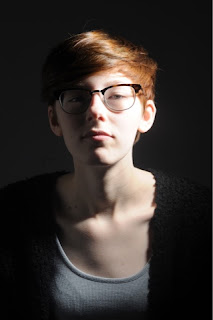High key lighting is an image with predominant light tones, often used in beauty, and low key lighting is an image with predominant dark tones, implying strength and power. High key lighting is often associated with females, whereas low key lighting is often associated with males.
Snoot-this object allows you to control the lightings direction, and radius. They can help isolate the individual, when using flash in the studio.
Honeycomb-allows you to tighten the beam of light, it doesn't create an as intense beam of light like the snoot does.
Reflector dish-this allows the light to reflect back onto the subject. It covers the flash head, and allows the redirection of light.
Irving Pen:
Irving pen uses both high, and low key lighting in his images, he uses the above pieces of equipment to achieve this. He was well known for his established fashion photography, and portraiture. Pen was also one of the first photographers to present his subjects on a grey background. Its's evident below how he would base his lighting techniques on the gender of the individual, with low key lighting often being used for males, and high key lighting for females.
These images below both highlight high key lighting, it is interesting to see that both of these images are of females, this is due to the high key lighting expressing femininity.
The high key lighting used helps capture the vast amount of freckles on the individuals face, this adds detail to the image.
The image above was one of Pen's fashion shoots, we can see this by the 'VOGUE' logo in the bottom right corner, therefore he would have used the high key lighting as this lighting technique often used in beauty images, in order to portray femininity and to capture all of the details within the image.
These images below are both examples of Irving's work, showing low key lighting. It is interesting that both these images below are of males, this may be due to the darker tones linking to masculinity.
This image uses low key lighting, the expression held on the mans face works well with the lighting technique as he looks sad, therefore the darker tones in the image portray this further.
The man appears shocked in this image, as he has wide eyes. The low key lighting adds to the atmosphere of the photograph, by making it mysterious as you cannot see all of the image.
































































